Kharkiv during the German occupation in color
Categories: History
By Pictolic https://pictolic.com/article/kharkiv-during-the-german-occupation-in-color.htmlEven after so many years, interest in the events of the Second World War does not fade. There are still disputes about the interpretation of many of its episodes and events. Unlike earlier wars, this war left behind a huge number of photographic documents that captured those terrible events. More and more new images that were previously in closed archives and private collections are becoming available to a wide audience. Of particular interest are realistic color images that convey the atmosphere of those years with greater completeness.
Today we will show a series of pictures of occupied Kharkiv, taken mainly in 1942. Some of the buildings in the photos were destroyed after air raids and shelling, but a year later even more Kharkiv streets will be destroyed when in 1943 the city will again become the scene of fierce battles. In the photos presented in the collection, many streets are recognizable, but some buildings in the pictures have not survived to this day, as they were destroyed during the fighting or demolished in the post-war years.
Despite everything, life continues on the streets of the occupied city in 1942 — Kharkiv residents conduct trade, public transport goes, signs in German and Ukrainian are full of signs, passers-by look at German propaganda.
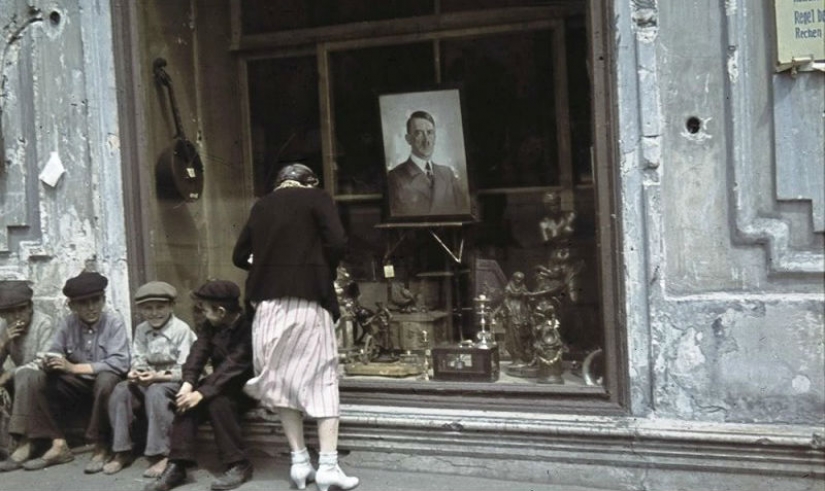
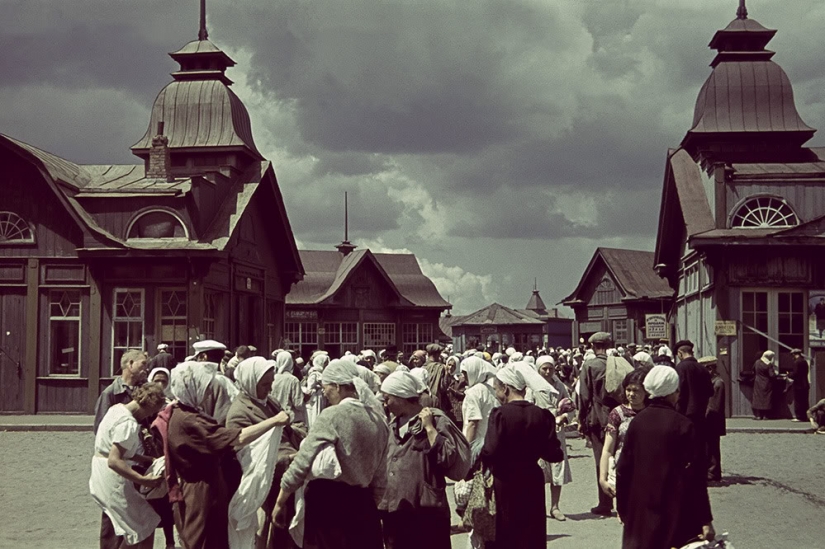
Citizens against the background of shopping pavilions of the Central Market of Kharkiv.
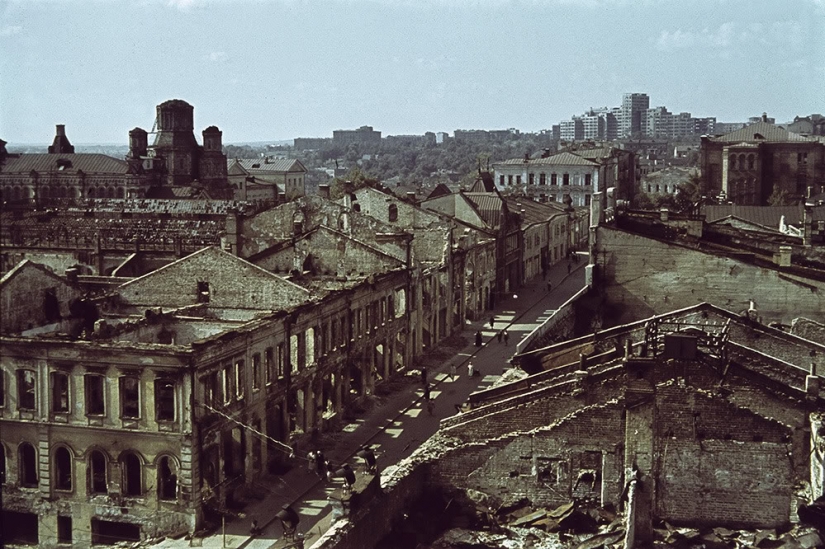
Passers-by on one of the victims of the bombing of the central streets of Kharkiv. On the horizon you can see the current building of the Kharkiv National University, and in those days-the House of Projects. The building was badly damaged during the war and by 1960 it was rebuilt and given to the university.
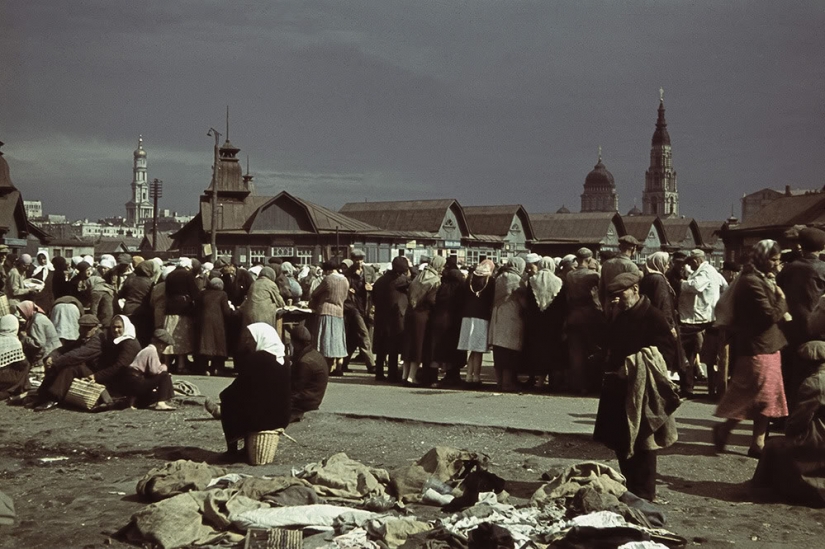
Trading on the Central Market. The domes of the Annunciation Cathedral (on the right) and the dome of the Assumption Cathedral, where the House of Organ and Chamber Music has been located since 1986, are visible against the background.
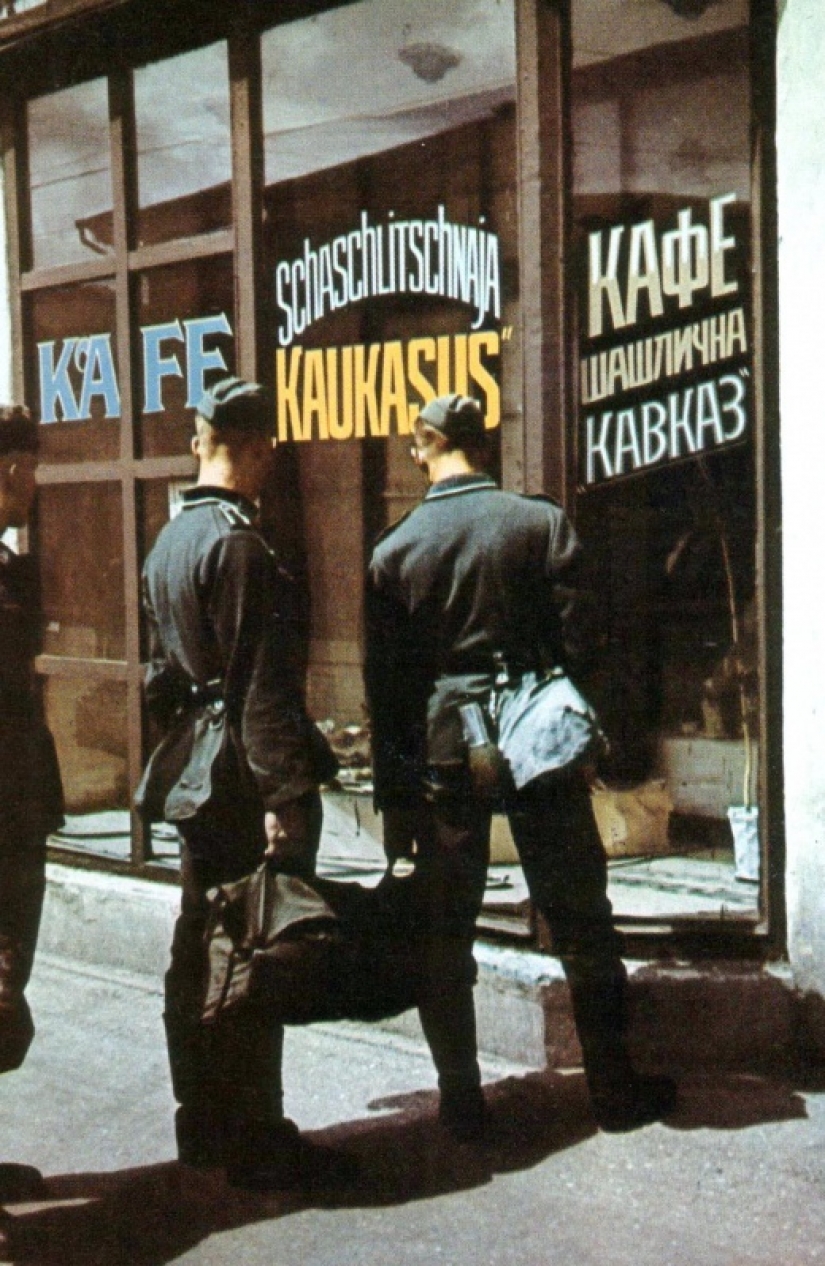
German soldiers at the window of the cafe "Kavkaz" in Kharkiv.
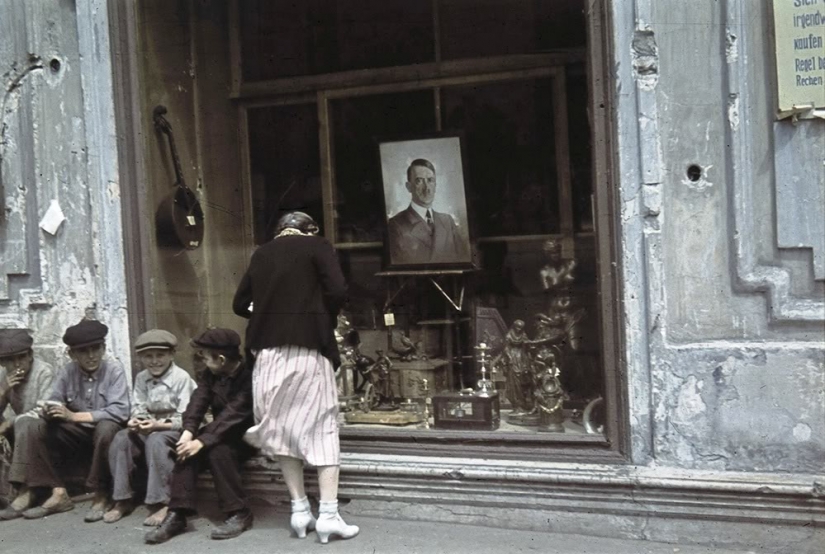
Portrait of Adolf Hitler in a shop window in occupied Kharkiv in 1942.
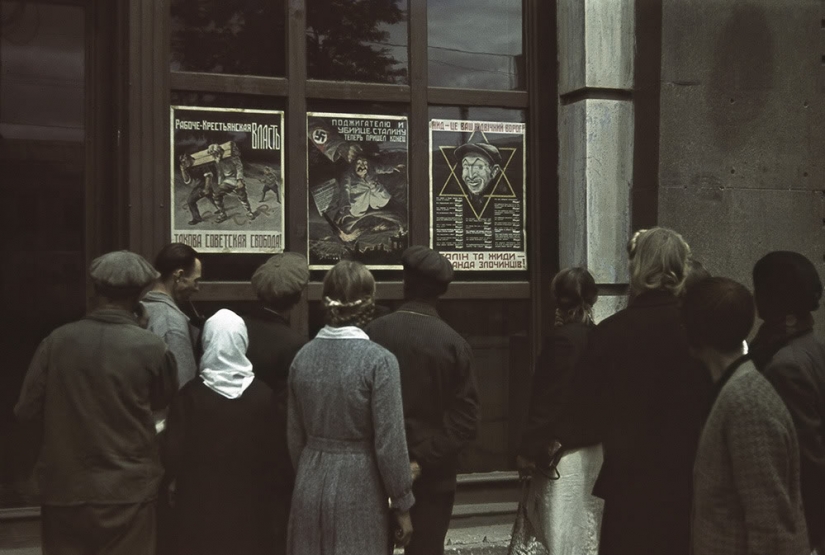
Kharkiv residents are considering anti-Semitic and Anisoviet posters.
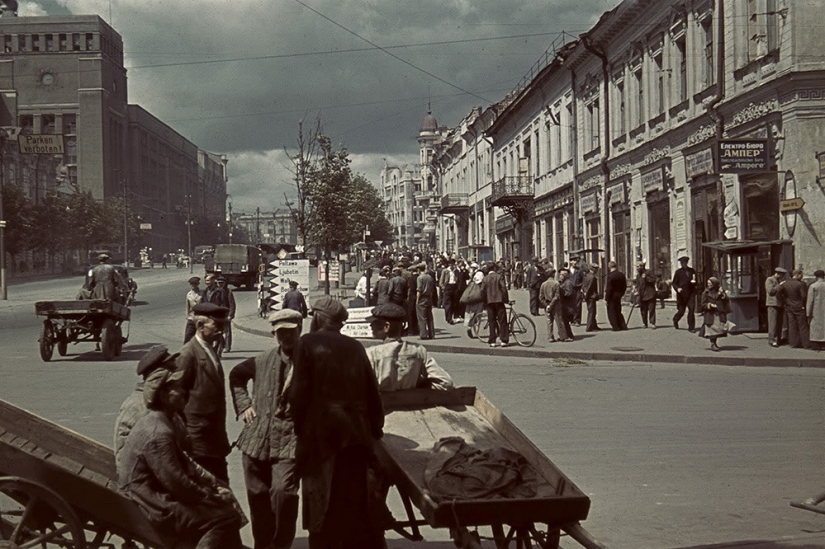
Tevelev Square in occupied Kharkiv (currently-Constitution Square). The building on the right has not been preserved, in its place is a post-war building.

The Krasnaya Hotel in occupied Kharkiv in June-July 1942. Before the revolution, the hotel was called "Metropol". It was one of the most beautiful buildings in the city, but during the occupation it was very badly damaged and could not be restored. In its place, after the war, a new building was built, the usual architecture for that time.
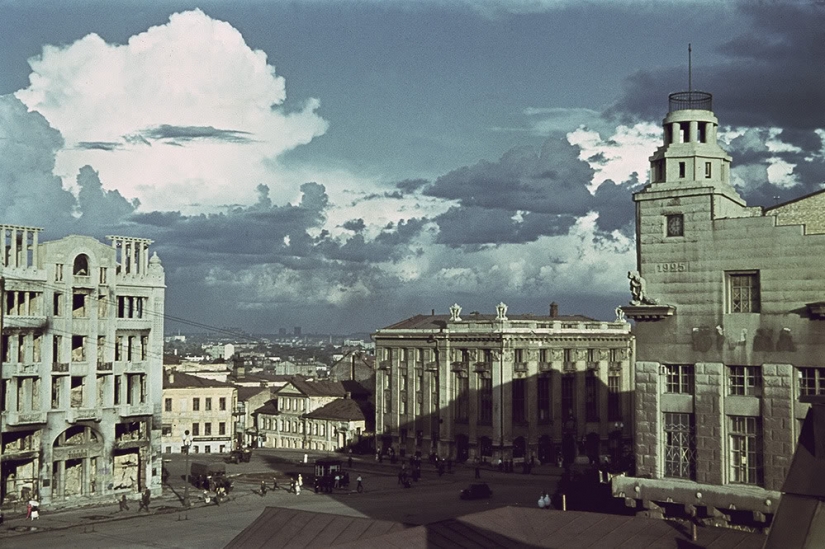
M. S. Tevelev Square in occupied Kharkiv (currently-Constitution Square). On the left — the building of the Krasnaya Hotel, heavily damaged during the occupation, demolished after the war. The picture was taken from the roof of the building of the Palace of Pioneers (the former Noble Assembly), which was also destroyed during the occupation; now in its place is a monument in honor of the proclamation of Soviet power in Ukraine (now being dismantled).
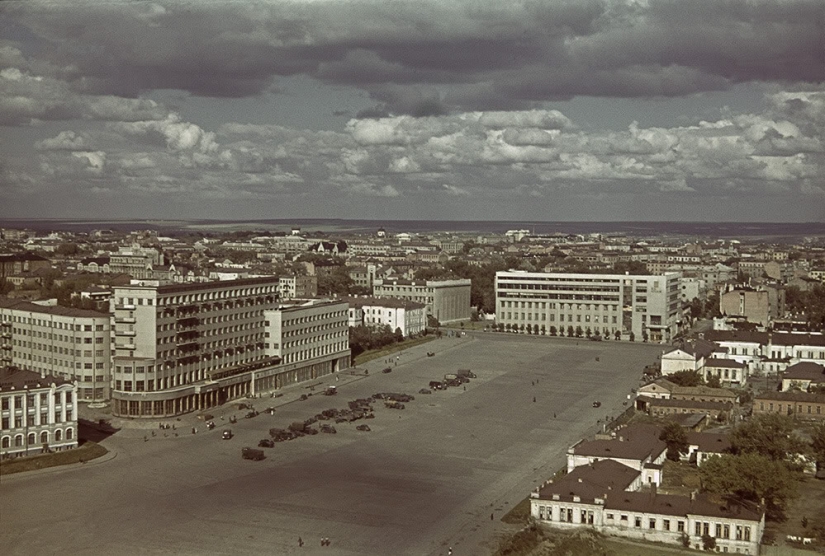
German cars in front of the hotel "Kharkiv" in 1942, on the central square of the city (now Freedom Square), which from its foundation to 1996 was called Dzerzhinskiy Square. During the German occupation in 1942, it was called the German Army Square. From the end of March to August 23, 1943, it was called the SS Leibstandart Square after the 1st Division of the SS Leibstandart "Adolf Hitler", which had just captured the city for the second time in the third Battle for Kharkov.
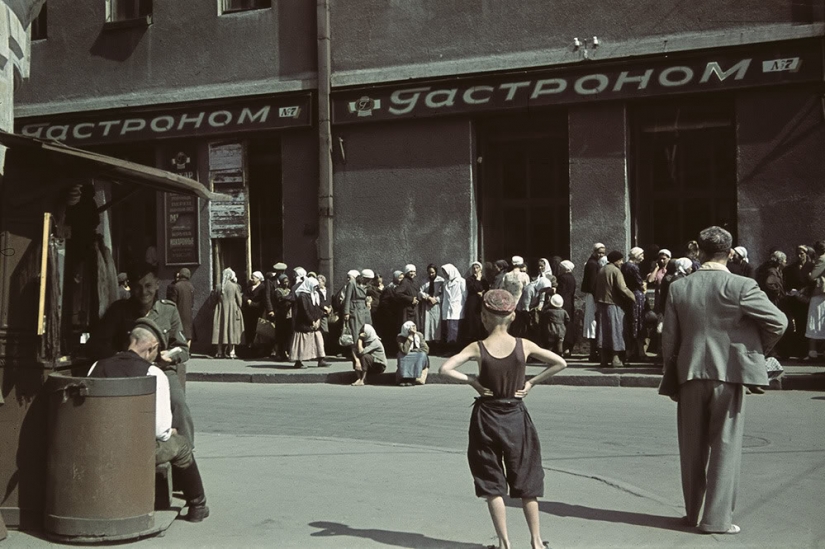
The queue for food near the Kharkiv grocery store in 1942.
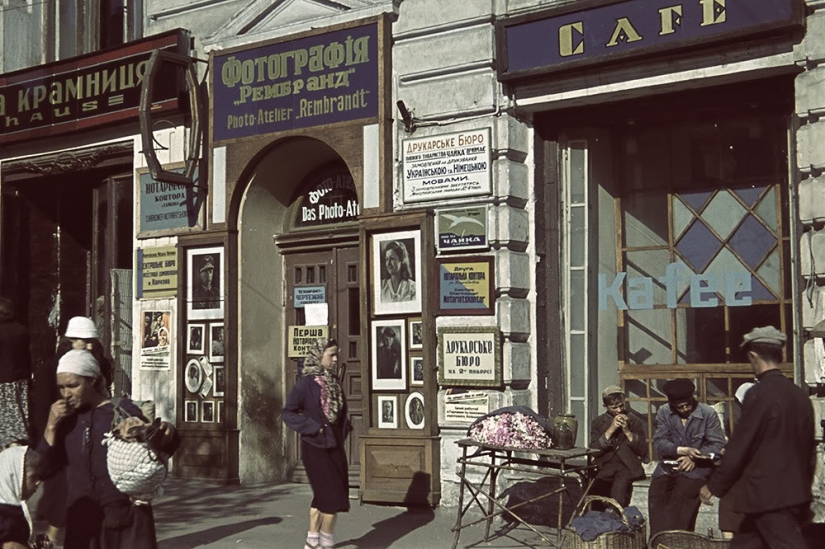
Photo Studio "Rembrandt" in occupied Kharkov in 1942.
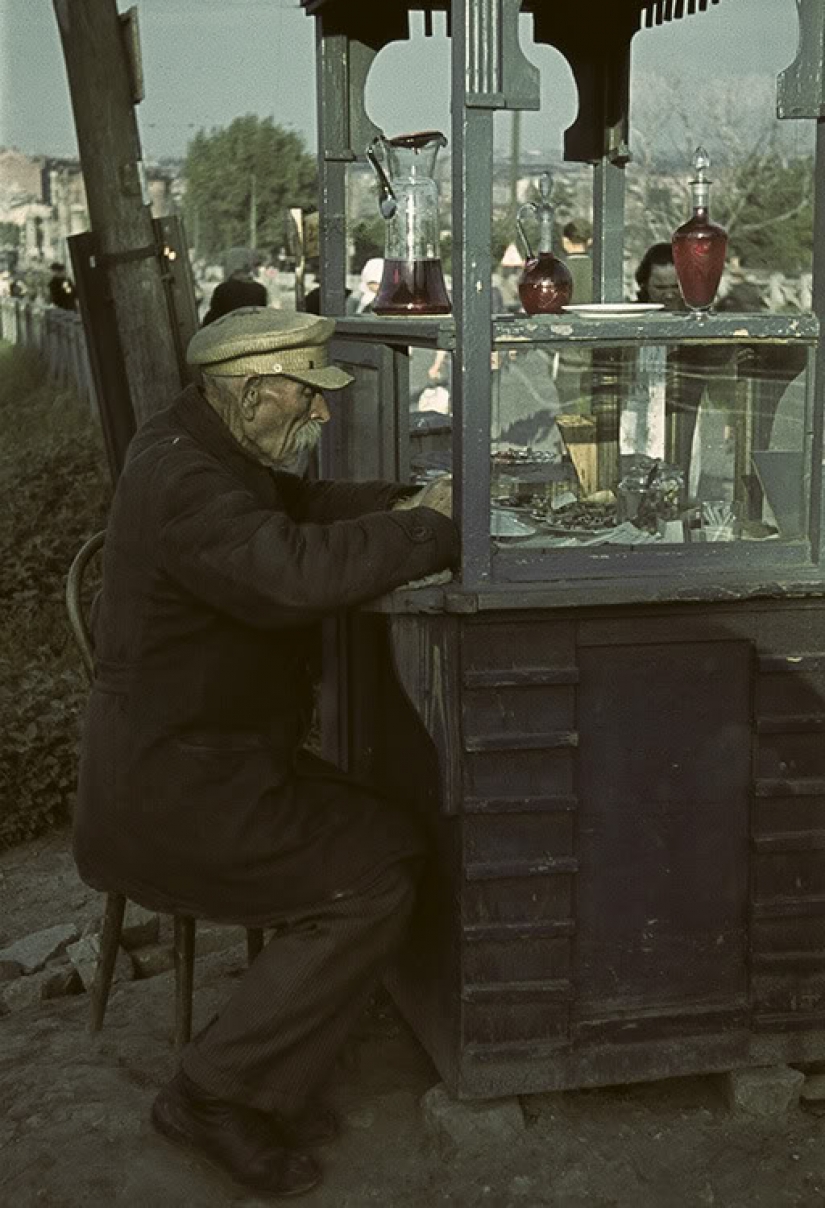
Trading at the entrance to the Central Market.
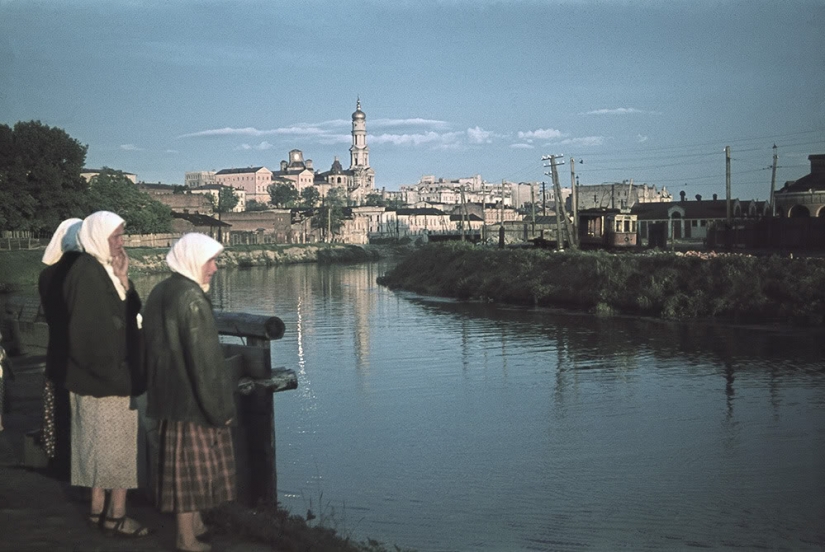
The embankment of the Lopan River in the Central Market area. On the horizon, you can see the tram and the bell tower of the Assumption Cathedral.
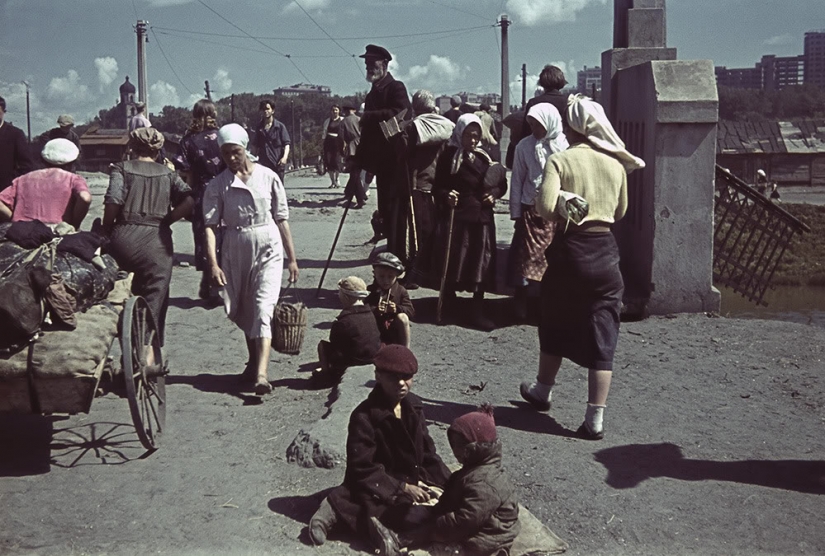
At the bridge over the Lopan river in occupied Kharkiv in 1942.
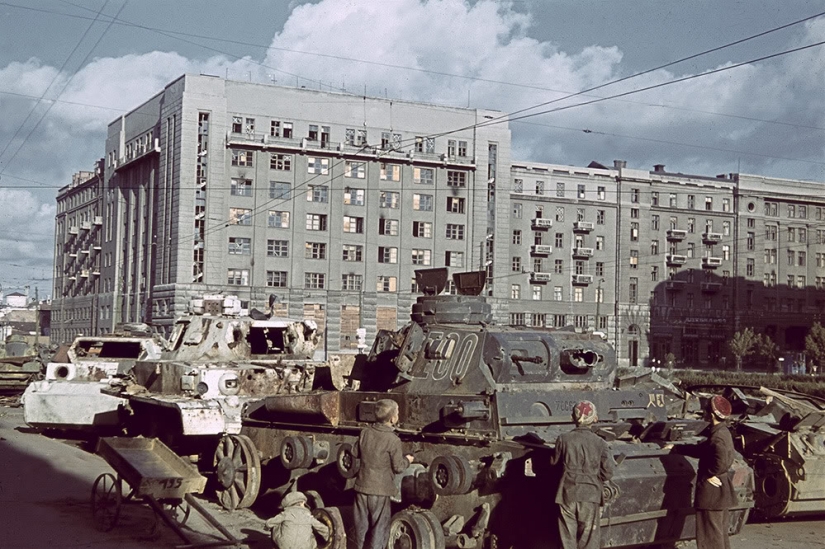
Children look at the damaged German tanks assembled on the Forecourt (from the main post office) of occupied Kharkiv. In the foreground is the commander's version of the Pz.Kpfw. III tank.
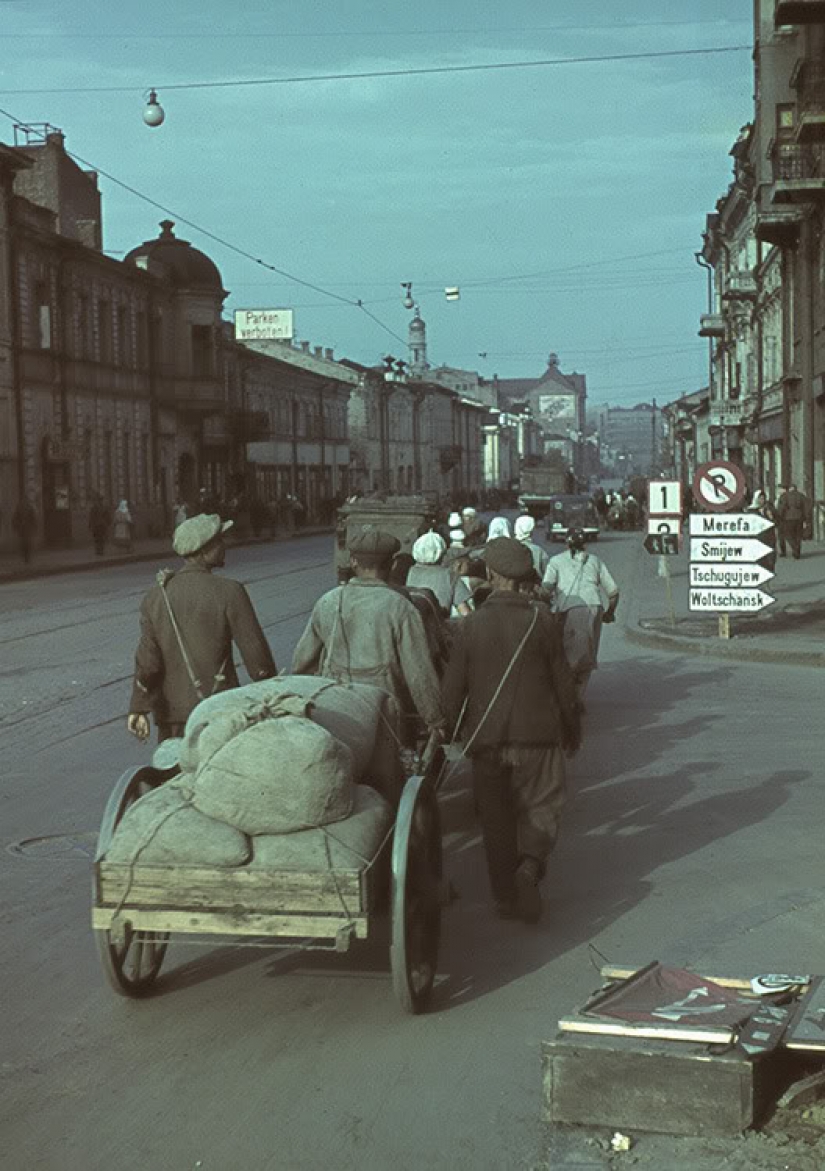
Sverdlov Street, now Poltava Shlyakh Street.
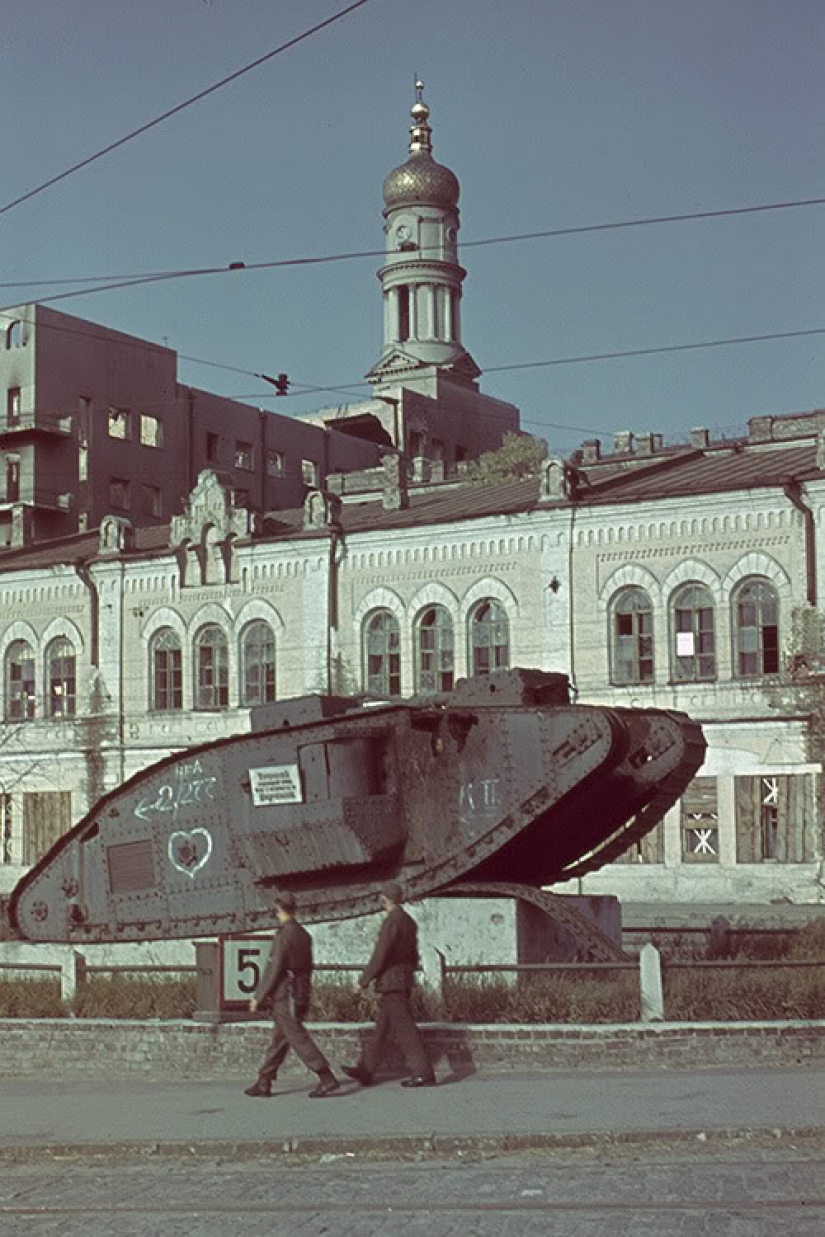
German patrol on the background of a Mark V tank near the Historical Museum in Kharkiv.
In the early 1940s, the Kharkiv Historical Museum became one of the largest in the Ukrainian SSR, its collections numbered more than 100 thousand items. During the Great Patriotic War, the museum was damaged and then restored and replenished with materials from the districts of the region. Currently, there is a T‑34 tank next to the Mark V.
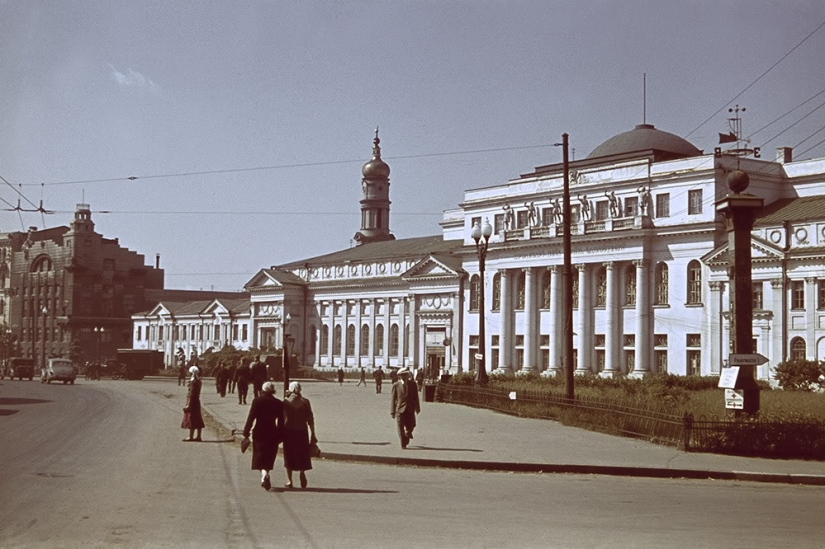
M. S. Tevelev Square in occupied Kharkiv (currently-Constitution Square). View of the building of the Noble Assembly (1820, architect V. Lobachevsky). Behind it, the Assumption Cathedral is visible.
Before the revolution, several hundred Kharkiv nobles gathered in the building every three years and elections to the Nobility Assembly were held. On March 13, 1893, a speech by P. I. Tchaikovsky took place in the building of the Noble Assembly in Kharkiv. Since 1920, before the transfer of the capital of Soviet Ukraine to Kiev, the VUTSIK — the All-Ukrainian Central Executive Committee-worked in the building of the Noble Assembly. In 1935, after the transfer of the capital to Kiev and the government moved, the building was transferred to the first Palace of Pioneers.
During the battles for Kharkov in 1943, the building was completely destroyed. Now in its place is a monument in honor of the proclamation of Soviet power in Ukraine (now being dismantled).
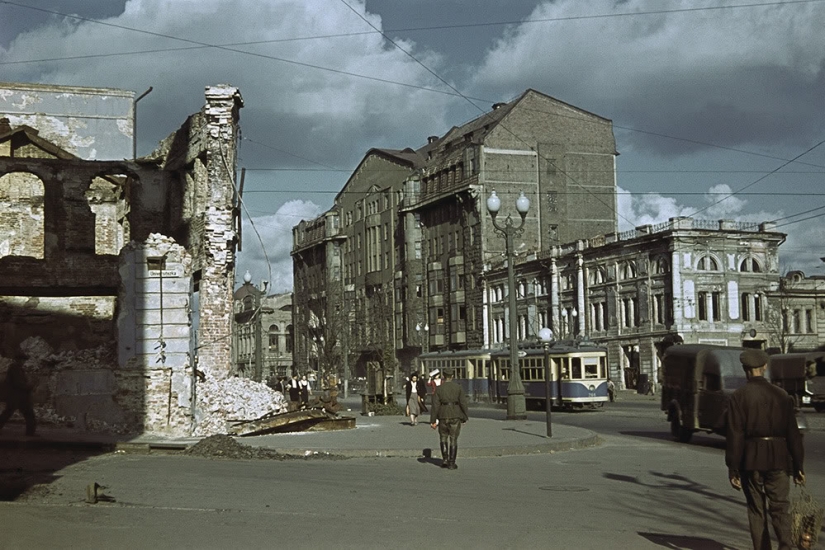
A tram passing along Sverdlov Street (now the Poltava Highway).
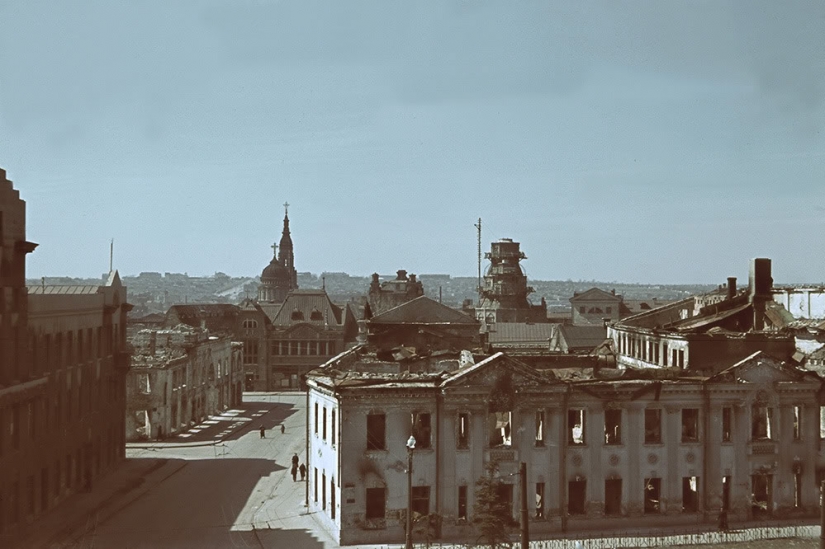
Damaged by bombing and shelling, the neighborhoods around the Annunciation Cathedral, which, like other Kharkiv churches, was opened for worship during the Nazi occupation. The cathedral building was not damaged during the war.
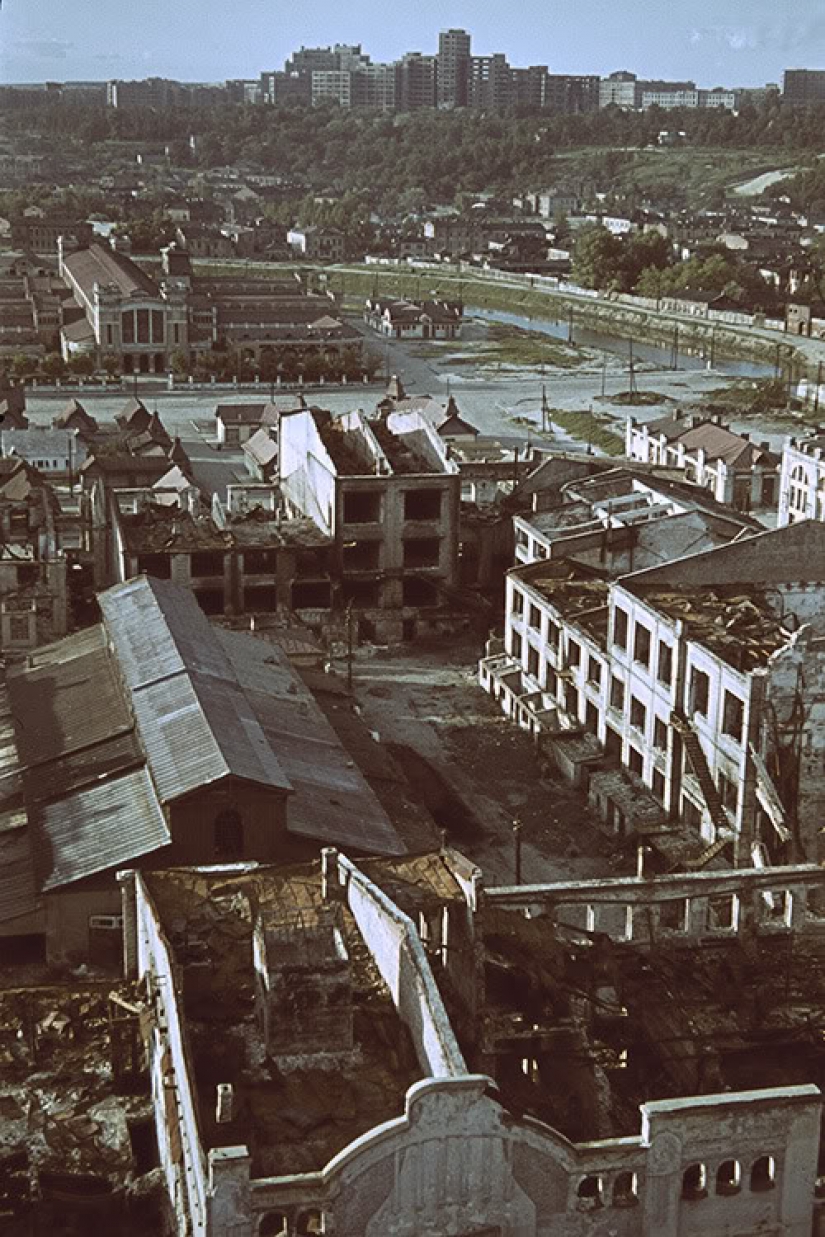
The buildings adjacent to the Central Market were seriously damaged during the war.
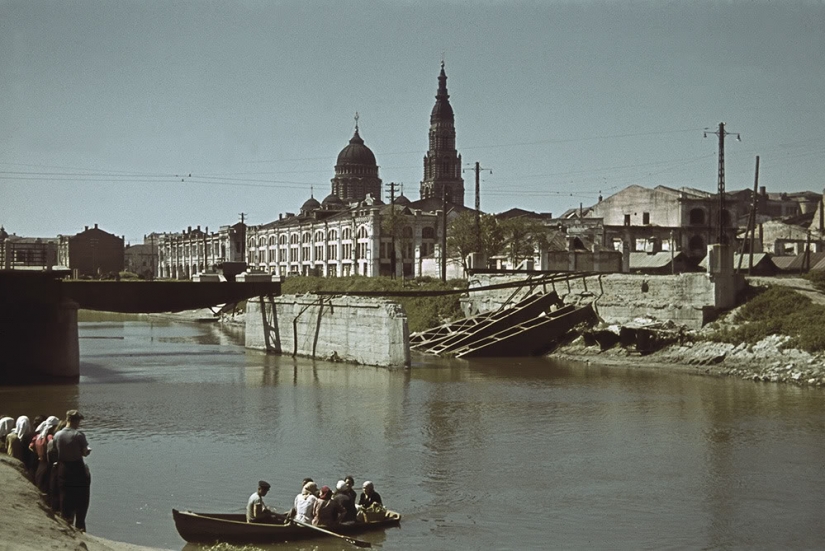
Boat crossing over the Lopan River. In the background — the bridge and the Annunciation Cathedral blown up during the retreat of the Soviet troops.
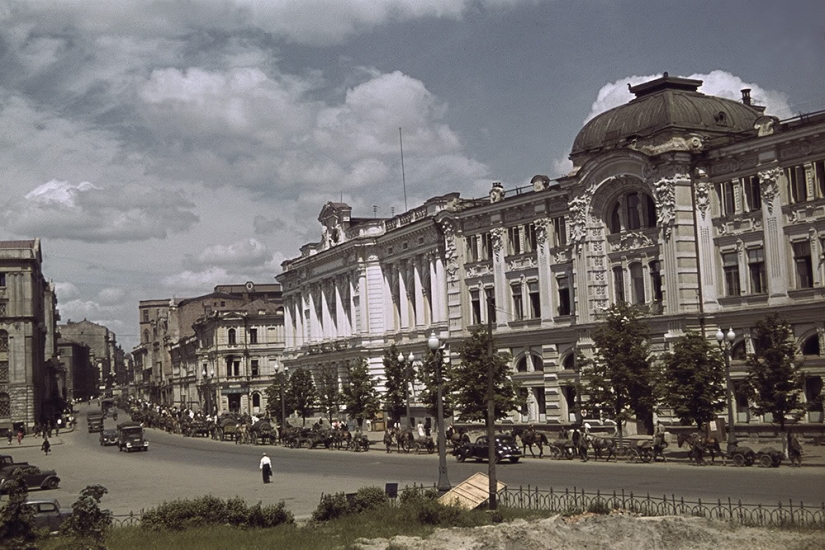
Tevelev Square (now Constitution Square) and a view of the beginning of Sumskaya Street. In the foreground is the House of Science and Technology.
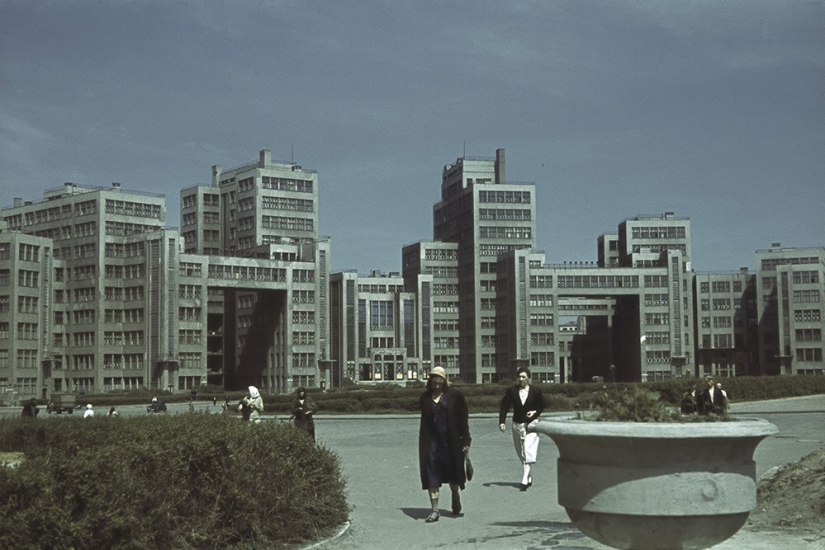
The Gosprom building in occupied Kharkiv.
During the German occupation of 1941-1943, a stable was built on the first floor, while monkeys who escaped from the zoo located next to the building lived on other floors at the beginning of the occupation. Until August 23, 1943, three rhesus monkeys lived in the Gosprom, to which a monument was opened on the territory of the zoo on the 65th anniversary of the liberation of the city, in August 2008. Before the retreat in August 1943, during the so-called "cleaning" of Kharkov, the Germans mined the Gosprom, as well as many other buildings of the city, but the explosion was prevented by an unknown patriot, who died at the same time. Then the building was set on fire, but it did not harm the reinforced concrete skeleton of the Gosprom.
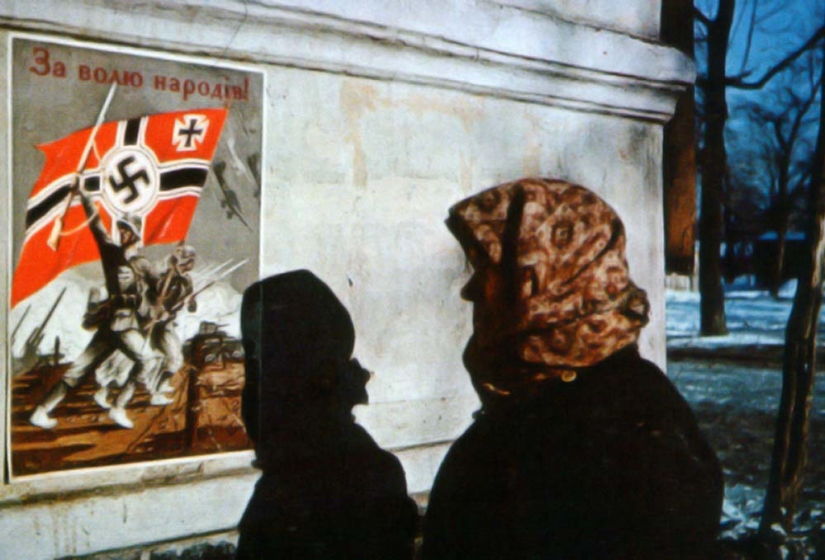
A resident of Kharkiv looks at a German propaganda poster. The inscription in Ukrainian reads "For the freedom of peoples".
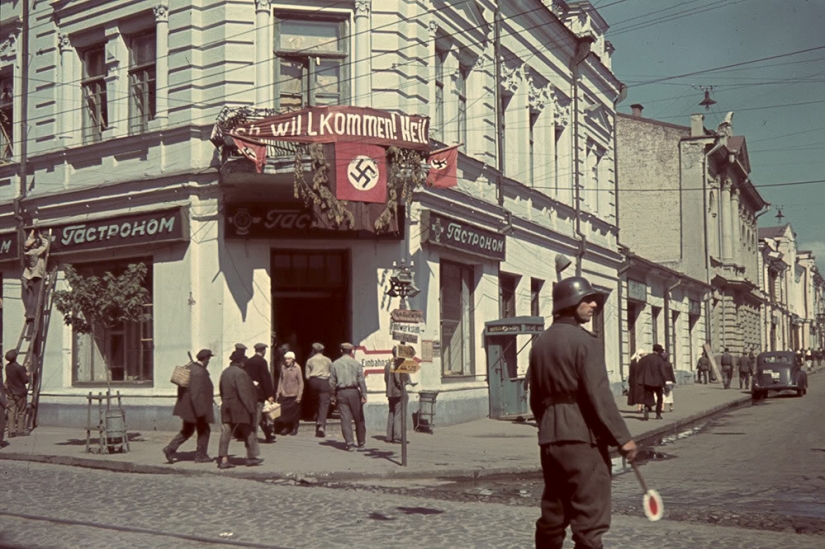
A German traffic controller near a grocery store in occupied Zhytomyr (the corner of Bolshaya Berdichevskaya (with tram rails) and Mikhailovskaya streets). Above the store is a banner with the inscription in German: "Welcome!". The photo is often mistakenly attributed to the well-known series of color photos of occupied Kharkiv.
Keywords: City | History | Archive | World War II | Occupation | Kharkiv | Germans | Ukraine
Post News ArticleRecent articles

"The Endless Road to Transylvania" is a well—known project of Colin Stan, a Romanian photographer. If you like the work of writer ...

Scottish Albert Watson is not just a fashion photographer. He is one of the twenty greatest photographers of our time. His pictures ...
Related articles

These days, the whole world admires the courage and vitality of speaker and motivator Nick Vujicic, but few people know that the ...

Today, 9 March, would have turned 87 years old our first cosmonaut Yuri Gagarin. We present images from his personal life to the ...

We all know and love the photos of Sergei Prokudin-Gorsky. Color frames of tsarist Russia are a unique asset. But there is another ...

What do people do when they earn millions? When there is so much money that it starts working for its owner, he usually enjoys life ...